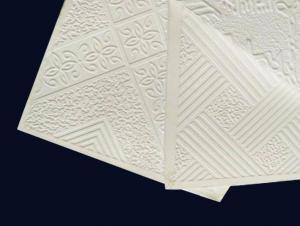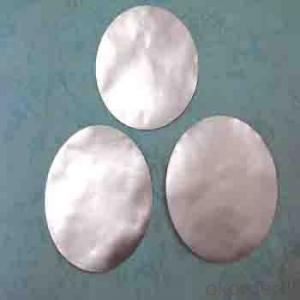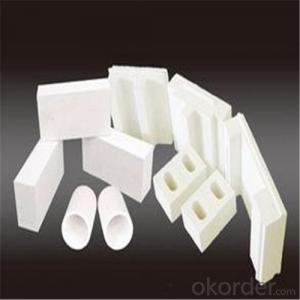Toxicity Of Stainless Steel
Toxicity Of Stainless Steel Related Searches
Shiny Or Dull Side Of Aluminum Foil For Cooking Inverter For 100w Solar Panel Solar Panel Inverter For Rv Pvc Tiles For Walls Wall Lights For Bedrooms Inverter Ac With Solar Panel Solar Panel With Inverter Kit Solar Panel Kits With Inverter Solar Panel With Inverter Direct Roving For PultrusionHot Searches
Steel Mesh Panels For Sale Type Of Inverter For Solar Price Of Shipping Containers For Sale Types Of Inverter For Solar Aluminum Bar Stock For Sale Bags Of Cement For Sale Types Of Temporary Side Panels For Cement Deck Cost Of Awnings For Decks Type Of Scaffolding With Pdf Price Of Scrap Stainless Steel Price Of Stainless Steel Scrap Price Of Stainless Steel Galvanized Steel Scrap Price Type Of Stainless Steel Types Of Stainless Steel Grades Types Of Stainless Steel Aluminum Corp Of China Stock Types Of Scaffolding In Construction Pdf Stainless Steel Factory Stainless Steel TypeToxicity Of Stainless Steel Supplier & Manufacturer from China
Okorder.com is a professional Toxicity Of Stainless Steel supplier & manufacturer, offers integrated one-stop services including real-time quoting and online cargo tracking. We are funded by CNBM Group, a Fortune 500 enterprise and the largest Toxicity Of Stainless Steel firm in China.Hot Products
FAQ
- Indeed, chemical reactors can indeed utilize stainless steel sheets. The utilization of stainless steel in chemical reactors is quite popular due to its remarkable resistance to corrosion. Its ability to resist chemical reactions with various substances is commendable, thus rendering it suitable for handling corrosive chemicals or environments. Moreover, stainless steel sheets are renowned for their durability, exceptional strength, and capacity to endure high temperatures. Hence, they are ideal for deployment in chemical reactors that may operate under extreme conditions. Furthermore, stainless steel is effortlessly maintainable and easy to clean, which is a pivotal factor in ensuring the purity and integrity of the reaction process. In conclusion, stainless steel sheets are widely employed in the construction of chemical reactors and are widely recognized as a trustworthy and efficient choice of material for this purpose.
- Yes, stainless steel sheets can be used for medical implants or devices. Stainless steel is a commonly used material in the medical field due to its high strength, corrosion resistance, and biocompatibility. It is particularly suitable for applications such as surgical instruments, orthopedic implants, and dental tools, where durability and hygiene are essential.
- Various types of stainless steel sheet finishes are commonly used in food processing applications. 1. Achieved through hot rolling, the No. 1 Finish leaves the stainless steel sheet with a rough surface. Due to its lack of smoothness, it is not typically used in food processing applications as it can harbor bacteria. 2. The No. 2B Finish, on the other hand, is a smooth and reflective finish achieved through cold rolling and annealing of the stainless steel sheet. This finish is commonly used in food processing applications as it is easy to clean and maintain. 3. If a brushed appearance is desired, the No. 4 Finish is achieved by creating a uniform grain on the surface using abrasive materials. This finish is often used in food processing applications where a decorative or aesthetic finish is desired. 4. For the most reflective finish available, the No. 8 Mirror Finish is achieved by polishing the surface until it becomes highly reflective and mirror-like. This finish is often used in food processing applications that require a high level of cleanliness and hygiene. Aside from these finishes, there are also specialized finishes such as bead blasted, patterned, and embossed finishes that can be used in food processing applications to meet specific aesthetic or functional requirements. Ultimately, the choice of finish will depend on the specific needs of the food processing application, including factors such as hygiene, ease of cleaning, and aesthetic considerations.
- Indeed, elevator cabins can utilize stainless steel sheets. The employment of stainless steel in elevator cabins is widespread owing to its resilience, pleasing aesthetics, and effortless upkeep. Its resistance to corrosion proves crucial in settings subjected to elevated humidity or chemical exposure. By utilizing stainless steel sheets, one can fashion elegant and contemporary elevator cabins that possess both functionality and visual allure. Furthermore, stainless steel's effortless cleaning and maintenance render it an exemplary selection for heavily frequented spaces like elevators.
- Yes, stainless steel sheets are highly suitable for water treatment plants. Stainless steel is known for its excellent corrosion resistance, which is crucial in water treatment facilities where the materials are constantly exposed to water and various chemicals. Stainless steel sheets are resistant to rust and corrosion caused by water, chlorine, chloramines, and other disinfectants commonly used in water treatment processes. Additionally, stainless steel is highly durable and can withstand high temperatures, making it ideal for use in water treatment plants where heat may be applied during certain treatment processes. Furthermore, stainless steel is hygienic and easy to clean, ensuring that the water remains free from any contaminants or impurities. Overall, stainless steel sheets are a reliable and long-lasting choice for water treatment plants due to their corrosion resistance, durability, and hygienic properties.
- Yes, stainless steel sheets can be used for elevator panels. Stainless steel is a durable and corrosion-resistant material, making it suitable for high-traffic areas like elevators. It offers a sleek and modern aesthetic, making it a popular choice for elevator panels in commercial and residential buildings.
- To determine the thickness of stainless steel sheets required for a specific application, several factors need to be considered. 1. Load-bearing capacity: The first step is to determine the maximum load the stainless steel sheets will need to support. This can be calculated by considering the weight of the objects or materials that will be placed on the sheets. It is important to account for any potential dynamic loads or impact forces that may be applied. 2. Deflection limits: Deflection refers to the amount of bending or sagging that occurs when a load is applied to the stainless steel sheets. The deflection limits will depend on the specific application and the desired performance of the sheets. In general, minimizing deflection is crucial for structural integrity and to ensure the stainless steel sheets can handle the intended load without excessive bending. 3. Material properties: Stainless steel sheets come in different grades, each with its own mechanical properties. The tensile strength, yield strength, and hardness of the stainless steel should be considered to ensure it can withstand the required load and any potential environmental conditions such as corrosion or extreme temperatures. 4. Safety factors: It is important to apply appropriate safety factors to ensure the stainless steel sheets have a margin of safety. Safety factors account for uncertainties in load calculations, material properties, and other factors. The safety factor can vary depending on the level of confidence required, but it is typically recommended to apply a safety factor of at least 1.5 to 2. 5. Industry standards and regulations: Depending on the specific application, there may be industry standards or regulations that dictate the minimum thickness requirements for stainless steel sheets. It is important to consult these standards and ensure compliance to ensure the sheets meet any safety or performance requirements. By considering these factors and performing engineering calculations, it is possible to determine the appropriate thickness of stainless steel sheets required for a specific application. It is always recommended to consult with an experienced engineer or stainless steel supplier to ensure accurate calculations and to account for any specific requirements or considerations unique to the application.
- Yes, stainless steel sheets are suitable for railway station platforms. Stainless steel is a highly durable material that can withstand heavy foot traffic and extreme weather conditions, making it an ideal choice for platforms in railway stations. It is resistant to corrosion, which is crucial in areas exposed to moisture, such as platforms where rain, snow, or spilled liquids may occur. Stainless steel sheets are also easy to clean and maintain, ensuring a hygienic and safe environment for passengers. Additionally, stainless steel has a sleek and modern appearance, adding to the aesthetic appeal of the railway station. Overall, stainless steel sheets provide the necessary strength, durability, and aesthetic qualities required for railway station platforms.













































